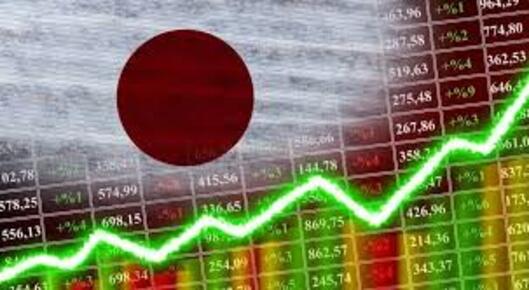
The rise of futures and derivatives (FD) trading across the globe is transforming how investors approach speculation, risk management, and market access. In the Gulf Cooperation Council (GCC) region, this transformation is especially noteworthy. As these economies diversify beyond hydrocarbons and invest in financial infrastructure, FD trading has gained a foothold as both a tactical tool and a long-term opportunity.
To fully understand these developments, one must not only explore regional trends but also consider the global forces shaping them.
Understanding FD Trading in the GCC Context
Futures and derivatives are financial instruments that derive their value from underlying assets such as commodities, currencies, or market indices. They are primarily used for hedging against risks or for speculative gains. In the GCC, FD trading is relatively young but maturing quickly, underpinned by policy reforms, infrastructure improvements, and increasing investor sophistication.
Regulatory frameworks across GCC countries—particularly in the UAE and Saudi Arabia—have become more welcoming. The Dubai Financial Services Authority (DFSA), the Central Bank of the UAE, and the Capital Market Authority (CMA) in Saudi Arabia all play key roles in shaping a stable and transparent FD trading environment. Exchanges like the Dubai Gold & Commodities Exchange (DGCX) and the Saudi Exchange (Tadawul) are at the heart of this evolution, providing platforms for a growing variety of derivative contracts.
Instruments traded range from commodity and currency futures to equity index derivatives and Shariah-compliant contracts. These products cater to institutional investors, high-net-worth individuals, and increasingly, retail traders looking for exposure to sophisticated tools. Find more information at ADS Securities.
Regional Trends Driving FD Market Growth
Economic diversification is a cornerstone of GCC national visions, such as Saudi Arabia’s Vision 2030 and the UAE’s Centennial Plan 2071. These strategies emphasise robust capital markets, which naturally include a well-developed FD segment. This diversification push has opened the door for financial innovation and greater participation in derivative instruments.
Institutional involvement in FD markets is growing, encouraged by government investment arms and sovereign wealth funds seeking better risk-adjusted returns. Simultaneously, platforms and brokers targeting retail investors have made derivatives more accessible, offering low-cost, user-friendly entry points into complex instruments.
The commodities-heavy nature of many GCC economies has also spurred interest in derivatives. With oil and gold being central to both government revenues and investment portfolios, futures contracts allow traders to hedge against or capitalise on price volatility. The regional need for effective risk management tools has never been more apparent, especially given external shocks like pandemics or geopolitical conflicts.
Sector-Specific Opportunities within GCC FD Trading
Opportunities in FD trading are often sector-dependent, shaped by regional strengths and global demand dynamics. In the energy sector, crude oil futures are naturally popular. The Middle East’s dominant position in oil production means that local entities—both public and private—frequently hedge price risks using FD instruments.
Precious metals, particularly gold and silver, are also seeing rising interest. Dubai’s historic role as a gold trading hub makes it a logical centre for gold futures activity, with DGCX offering a variety of precious metal contracts. These instruments serve both speculative traders and investors aiming to shield wealth from currency fluctuations or inflation.
Cross-Border Influences: A Global Lens on Local Markets
No financial market exists in a vacuum, and GCC FD trading is no exception. Interest rates in the U.S. and Europe, global inflation trends, and international monetary policy directly influence the pricing and attractiveness of derivative instruments in the region. For example, a shift in the Federal Reserve’s policy stance often ripples through to GCC interest rate derivatives due to the dollar peg most Gulf currencies maintain.
Commodity cycles also play a decisive role. When global oil prices soar, energy derivatives in the GCC become more volatile and liquid. Conversely, periods of low volatility may reduce hedging demand but open the door to more speculative activity.
Geopolitical tensions—whether in Eastern Europe, the Red Sea, or East Asia—have immediate impacts on the demand for risk-off assets like gold, boosting trading volumes in related futures contracts. Moreover, increased global interest in the GCC markets is leading to partnerships and listings that further integrate local derivatives with international financial ecosystems.
Technological Advancements Enhancing FD Trading
The GCC has embraced financial technology to accelerate its development. Electronic trading platforms have replaced traditional broker-driven systems, allowing faster execution and broader access. Algorithmic trading is slowly but steadily gaining ground, enabling institutional investors to automate strategies that respond to real-time data.
AI and big data analytics are being leveraged for market prediction, backtesting, and sentiment analysis. These technologies offer competitive edges in both discretionary and systematic trading approaches. Some GCC exchanges are even exploring machine learning tools to improve market surveillance and reduce manipulation risks.
Conclusion
Futures and derivatives trading in the GCC is rapidly evolving, fueled by regional economic ambitions and global financial trends. With deepening markets, sophisticated instruments, and supportive regulatory frameworks, the region is carving out a role in the broader world of derivatives trading. Yet, to fully capitalise on these opportunities, investors and institutions must approach FD trading with both regional insight and a global mindset. As the GCC continues to bridge tradition with innovation, FD markets offer a promising avenue for growth, risk management, and financial integration on a global scale.